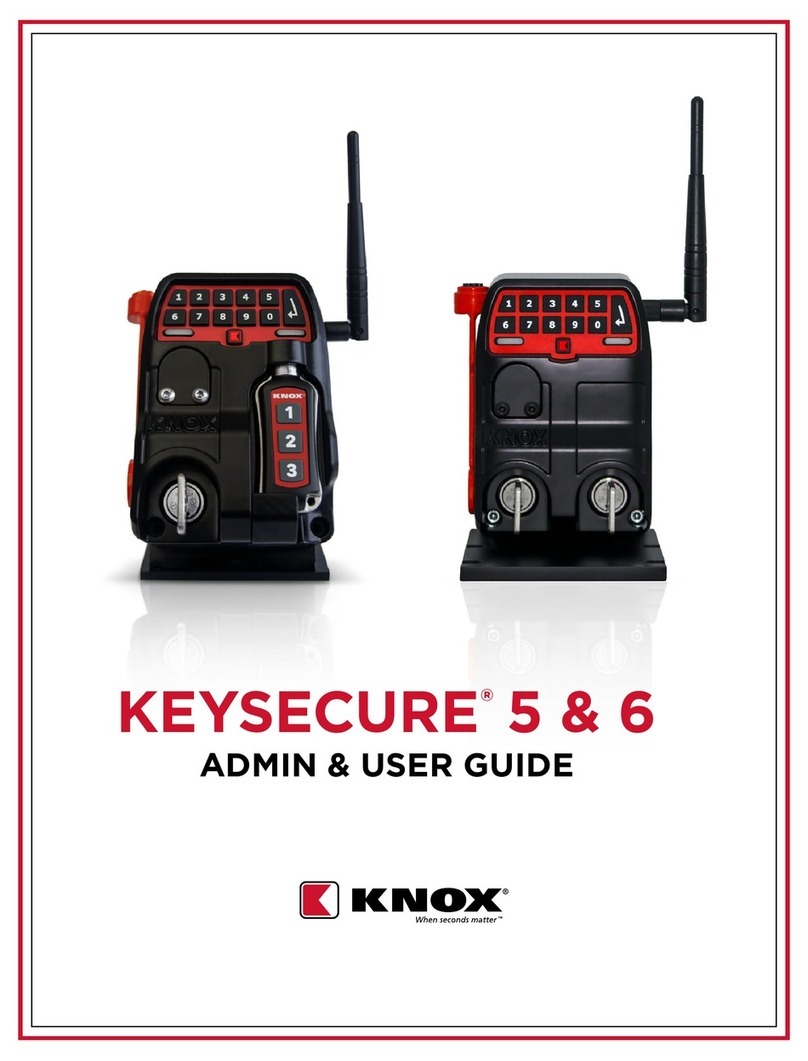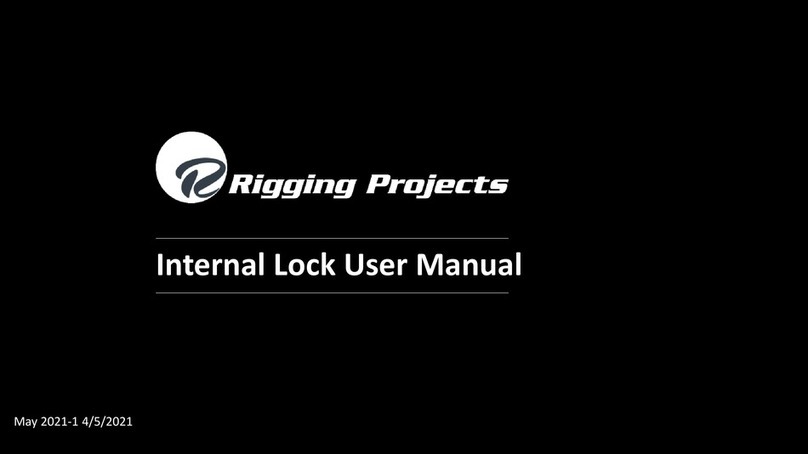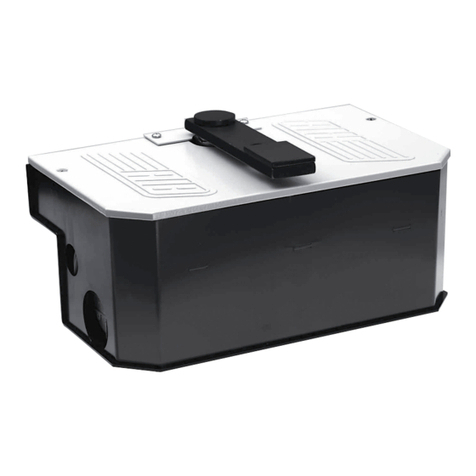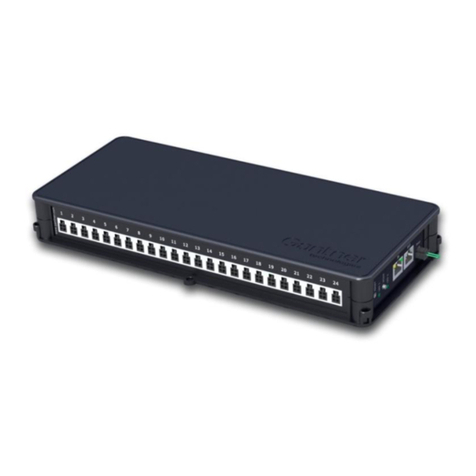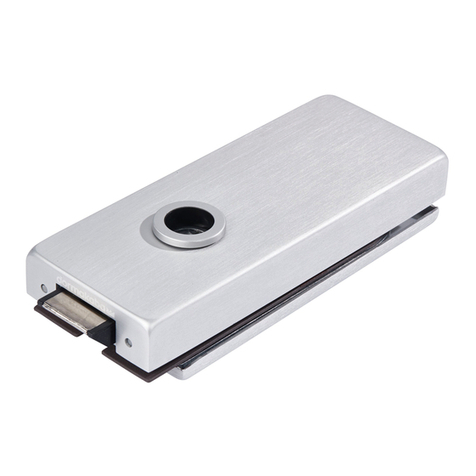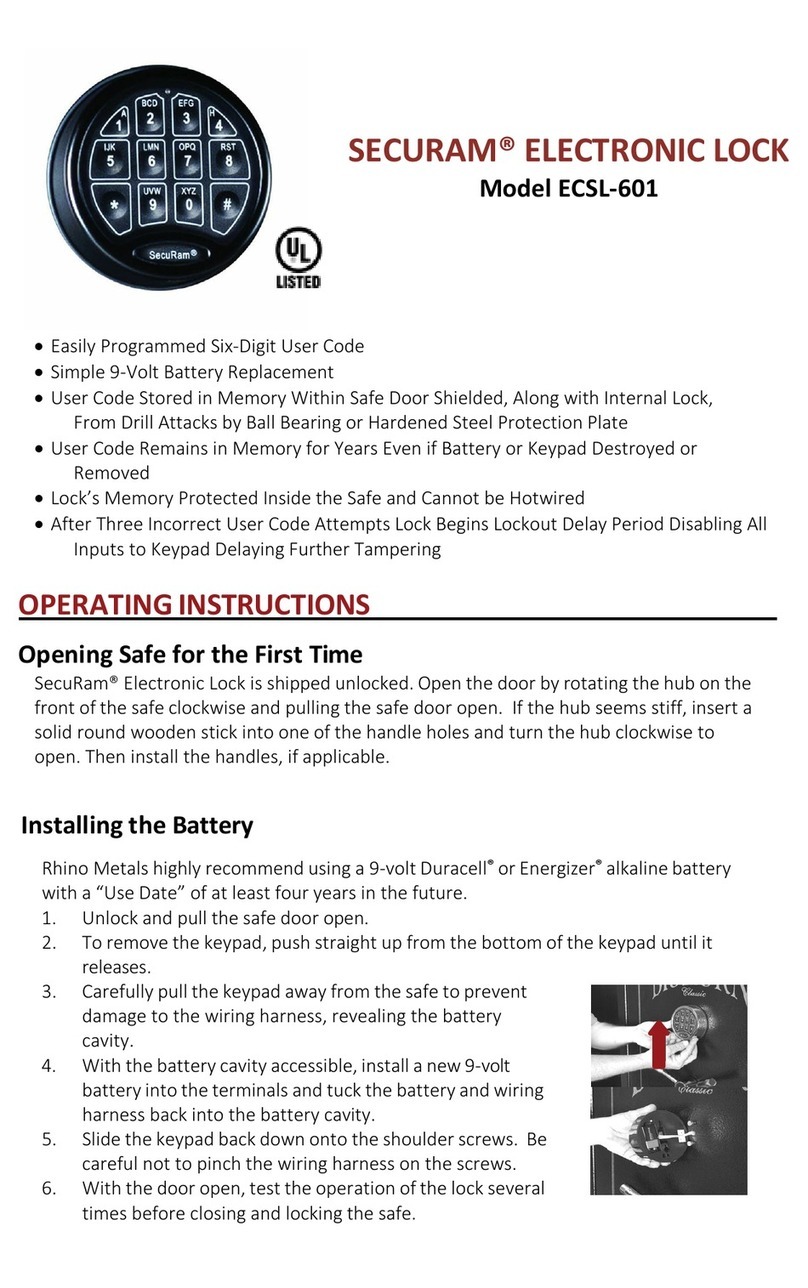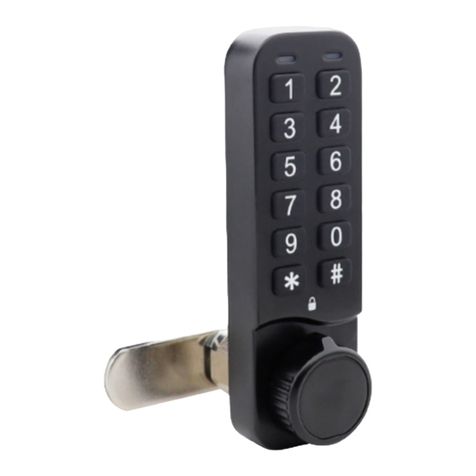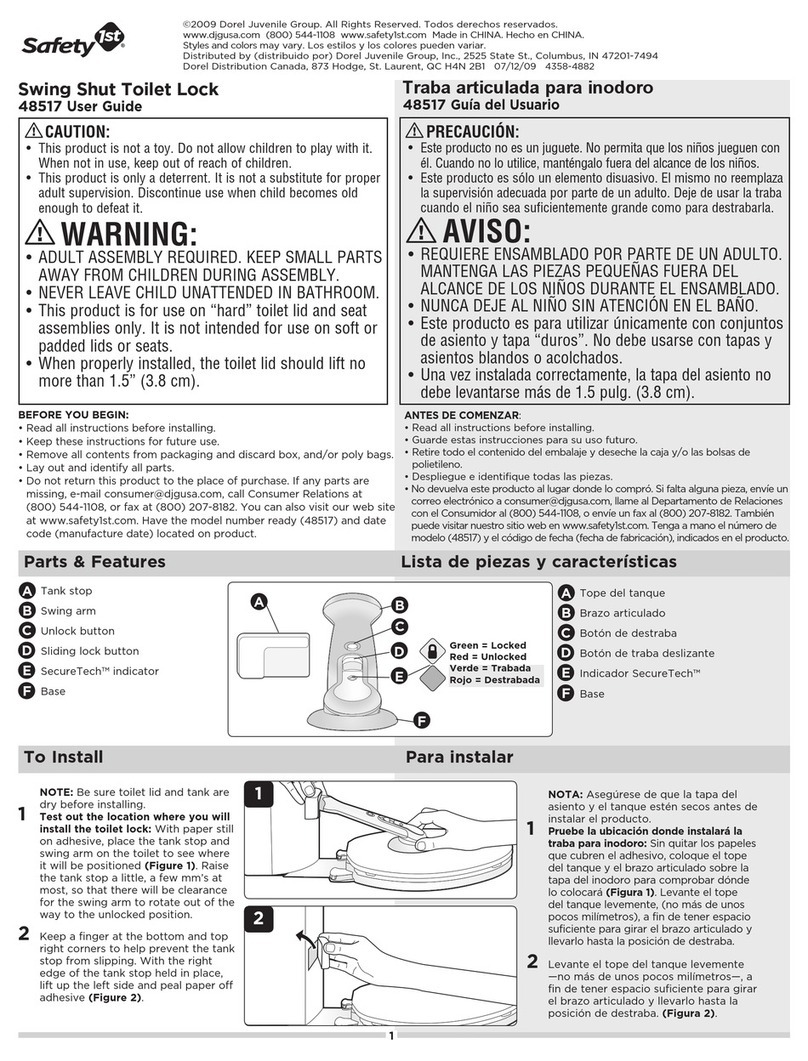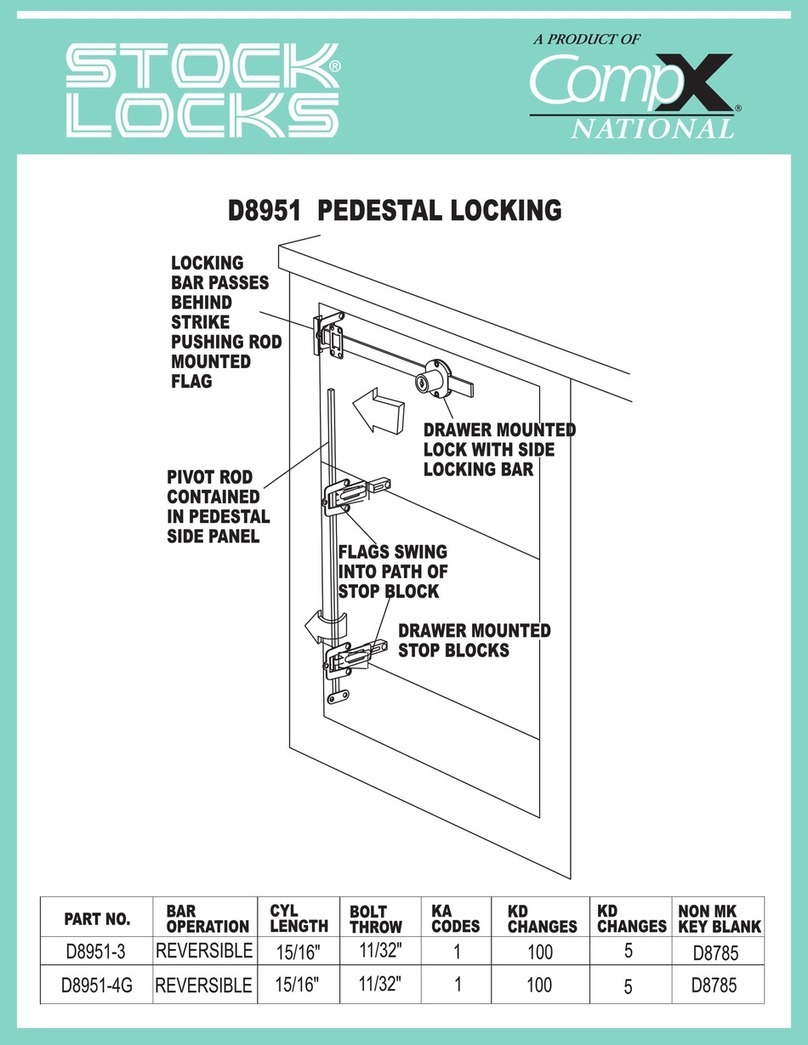Installation
Forward Lock Installation into mast
•Installation of a Rigging Projects Forward Lock should only be carried out by a suitably qualified and experienced personnel. If in any doubt,
contact Rigging Projects.
•Installation should only be carried out using the router jigs supplied by Rigging Projects.
•Mast tube engineering should be checked prior to locks being fitted to mast –If in any doubt, contact Rigging Projects first.
1. Working with the rig on the ground, position the router jig in the correct position on the mast and secure to the rig using the two lock mounting
bolts.
2. Once happy with the position of the lock, cut out the slot within the jig plate and tidy up with a drum sander to achieve a neat finish.
3. Working with the front cover and lower ferrule removed, tie a bowline through the ferrule hole and front cover slot.
4. Angle the top of the lock into the slot in the mast and push through until the lower edge passes through the slot.
5. Tilt the lock back to the upright position and pull towards the front of the rig until it seats in the slot. Fit the two mounting bolts and tighten to
pull the lock into place. These mounting bolts should be fitted with Loctite.
6. Fit the ferrule to the lock and fit the nylon tipped grub screw with blue Loctite to retain it.
7. Check the operation of the lock and once happy, fit the front cover using suitable adhesive.
4


